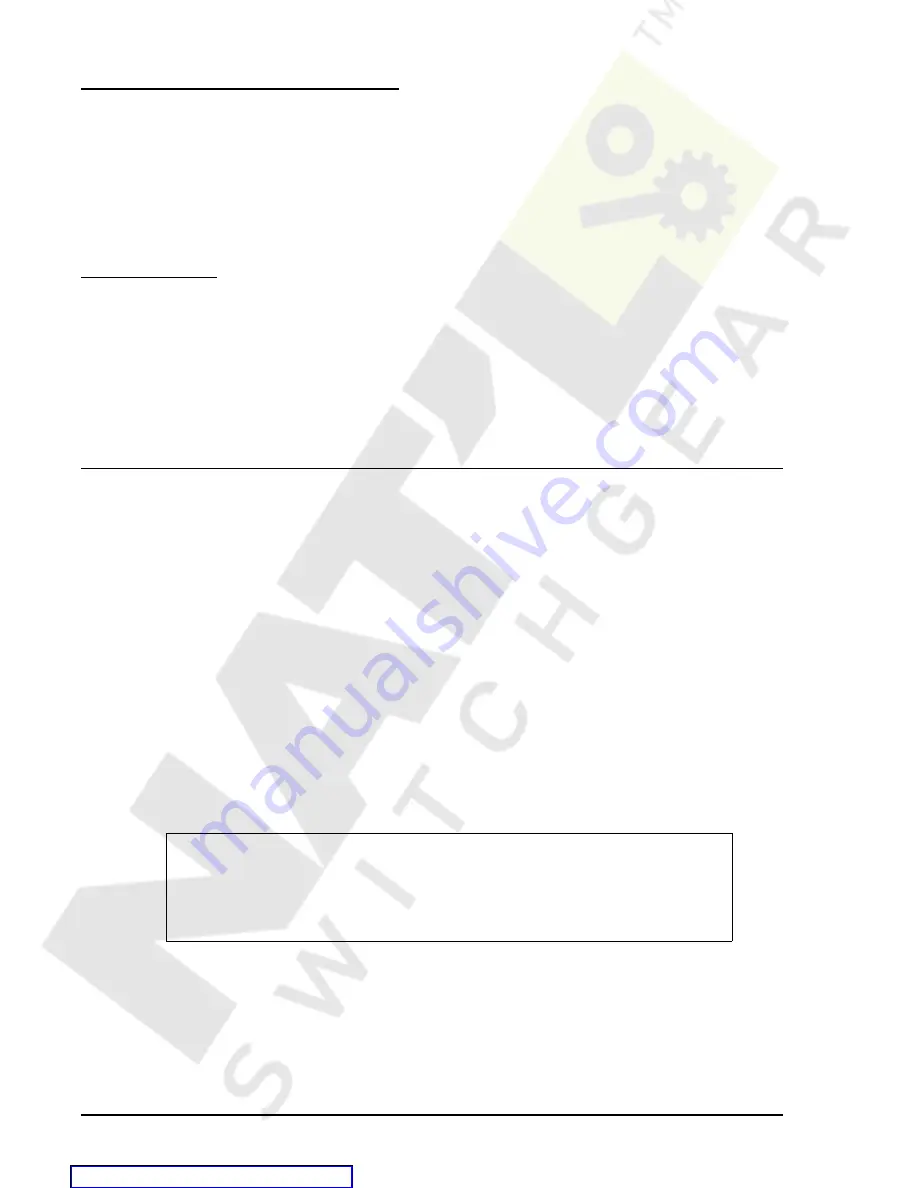
13-14
Testing and Maintenance
BE1-951
Just Prior to Energizing--Report Documentation
After completing the previous steps, capture and save a General Status Report by transmitting the
RG-STAT command. This report should be kept in the permanent record file of the device so the data
can be used for comparison in future maintenance procedures.
Also, save the entire settings record for future reference by transmitting the "S" command. Use this record
during the maintenance cycle or during the analysis of an operation to verify that the "as found" settings are
exactly as left during the commissioning process.
Refer to Section 6,
General Status Reporting, for details.
In Service Readings
Just after energizing the equipment, transmit the "M" command to the relay. Use this record to review the
following:
M-I and M-V to verify VT and CT ratios
Polarity of M-WATT and M-VAR readings to verify polarity of VT and CT connections
M-IQ and M-V2 to verify proper phase sequence connections
M-SYNC to verify proper phase relationship of VP and VX
Anything else that the user might find helpful
Save this record along with the RG-STAT record mentioned earlier for future reference.
PERIODIC TESTING
Because the BE1-951 has extensive internal test capabilities, periodic testing of the protection system can
be greatly reduced. Relay operating characteristics are a function of programming instructions that do not
drift over time. Thus, the user may wish to verify items that the relay's self-testing features cannot completely
determine. Periodic testing might consist of the following settings and function checks.
Verify that the set points that were proven during commissioning have not been changed.
Verify that the inputs and outputs are interfacing properly with the rest of the protection and
control system.
Verify that the power system analog parameters used by the protection and control functions are
being measured accurately.
Settings Verification
Verification of the relay digital I/O connections can be accomplished in different ways. The method used
depends on your preferences and practices. You might choose to use either of the following two
methods.
Repeat the digital I/O connection and label verification under commissioning tests.
Monitor SER, Status, and Fault reports for proper sensing of digital signals and proper
output tripping during normal operation.
NOTE
In redundant protection systems where multiple relays will trip a given breaker or other
device for a fault, fault record monitoring may not indicate a failed output contact. The
relay may report that it energized an output when tripping was actually accomplished
by the redundant relay. In this situation, testing the contact is recommended.






























